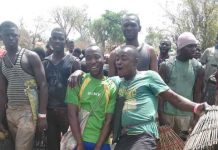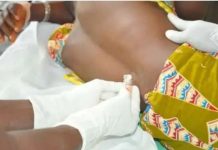Melanesians are the predominant and indigenous inhabitants of Melanesia, in a wide area from Maluku Islands and New Guinea to as far east as the islands of Vanuatu and Fiji. Most speak either one of the many languages of the Austronesian language family, especially ones in the Oceanic branch, or from one of the many unrelated families of Papuan languages. Other languages are the several creoles of the region, such as Tok Pisin, Hiri Motu, Solomon Islands Pijin, Bislama, and Papuan Malay.
The original inhabitants of the group of islands now named Melanesia were likely the ancestors of the present-day Papuan people. Migrating from Africa, they appear to have occupied these islands as far east as the main islands in the Solomon Islands, including Makira and possibly the smaller islands farther to the east.
Particularly along the north coast of New Guinea and in the islands north and east of New Guinea, the Austronesian people, who had migrated into the area more than 3,000 years ago, came into contact with these pre-existing populations of Papuan-speaking peoples. In the late 20th century, some scholars theorized a long period of interaction, which resulted in many complex changes in genetics, languages, and culture among the peoples.
It was proposed that, from this area, a very small group of people (speaking an Austronesian language) departed to the east to become the forebears of the Polynesian people. The indigenous Melanesian populations are thus often classified into two main groups based on differences in language, culture or genetic ancestry: the Papuan-speaking and Austronesian-speaking groups.
This Polynesian theory was overturned by a 2008 study, which was based on genome scans and evaluation of more than 800 genetic markers among a wide variety of Pacific peoples. It found that neither Polynesians nor Micronesians have much genetic relation to Melanesians. Both groups are strongly related genetically to East Asians, particularly Taiwanese aborigines.
It appeared that, having developed their sailing outrigger canoes, the ancestors of the Polynesians migrated from East Asia, moved through the Melanesian area quickly on their way, and kept going to eastern areas, where they settled. They left little genetic evidence in Melanesia, “and only intermixed to a very modest degree with the indigenous populations there”.
Nevertheless, the study still found a small Austronesian genetic signature (below 20%) in less than half of the Melanesian groups who speak Austronesian languages, and which was entirely absent in the Papuan-speaking groups.
The study found a high rate of genetic differentiation and diversity among the groups living within the Melanesian islands, with the peoples not only distinguished between the islands, but also by the languages, topography, and size of an island.
Such diversity developed over the tens of thousands of years since initial settlement, as well as after the more recent arrival of Polynesian ancestors at the islands. Papuan-speaking groups in particular were found to be the most differentiated, while Austronesian-speaking groups along the coastlines were more intermixed.
Further DNA analysis has taken research into new directions, as more human species have been discovered since the late 20th century. Based on his genetic studies of the Denisova hominin, an ancient human species discovered in 2010, Svante Pääbo claims that ancient human ancestors of the Melanesians interbred in Asia with these humans. He has found that people of New Guinea share 4%–6% of their genome with the Denisovans, indicating this exchange.
The Denisovans are considered cousin to the Neanderthals. Both groups are now understood to have migrated out of Africa, with the Neanderthals going into Europe, and the Denisovans heading east about 400,000 years ago. This is based on genetic evidence from a fossil found in Siberia. The evidence from Melanesia suggests their territory extended into south Asia, where ancestors of the Melanesians developed.
Melanesians of some islands are one of the few non-European peoples, and the only dark-skinned group of people outside Australia, known to have blond hair. The blonde trait developed via the TYRP1 gene, which is not the same gene that causes blondness in European blonds.
Source: Wikipedia.org
THANK YOU for constantly reading our stories. Kindly like, comment and SHARE stories on all social media platforms for more entertaining updates!
TO GET YOUR EXCLUSIVE INFO PUBLISHED ONLINE?
Call or WhatsApp our Editor on +233208291107 for Your Massive promo. You can equally email your stories or articles to info@xpressghonline.com or fuzzygh2016@gmail.com and we’ll surely put them online at www.xpressghonline.com or www.smartghonline.com











![Deenfly Ft Superboi Santana – Party Time [Prod By Asaynigi Recordz]](https://xpressghonline.com/wp-content/uploads/Deenfly-Ft-Superboi-Santana--100x70.jpg)
![Best Gally – Nubanie [Prod By Gallybeatz]](https://xpressghonline.com/wp-content/uploads/2019/05/gally1-100x70.jpg)
![Best Gally – Success [Prod By Gallybeatz]](https://xpressghonline.com/wp-content/uploads/2019/06/gally-s-100x70.jpg)
